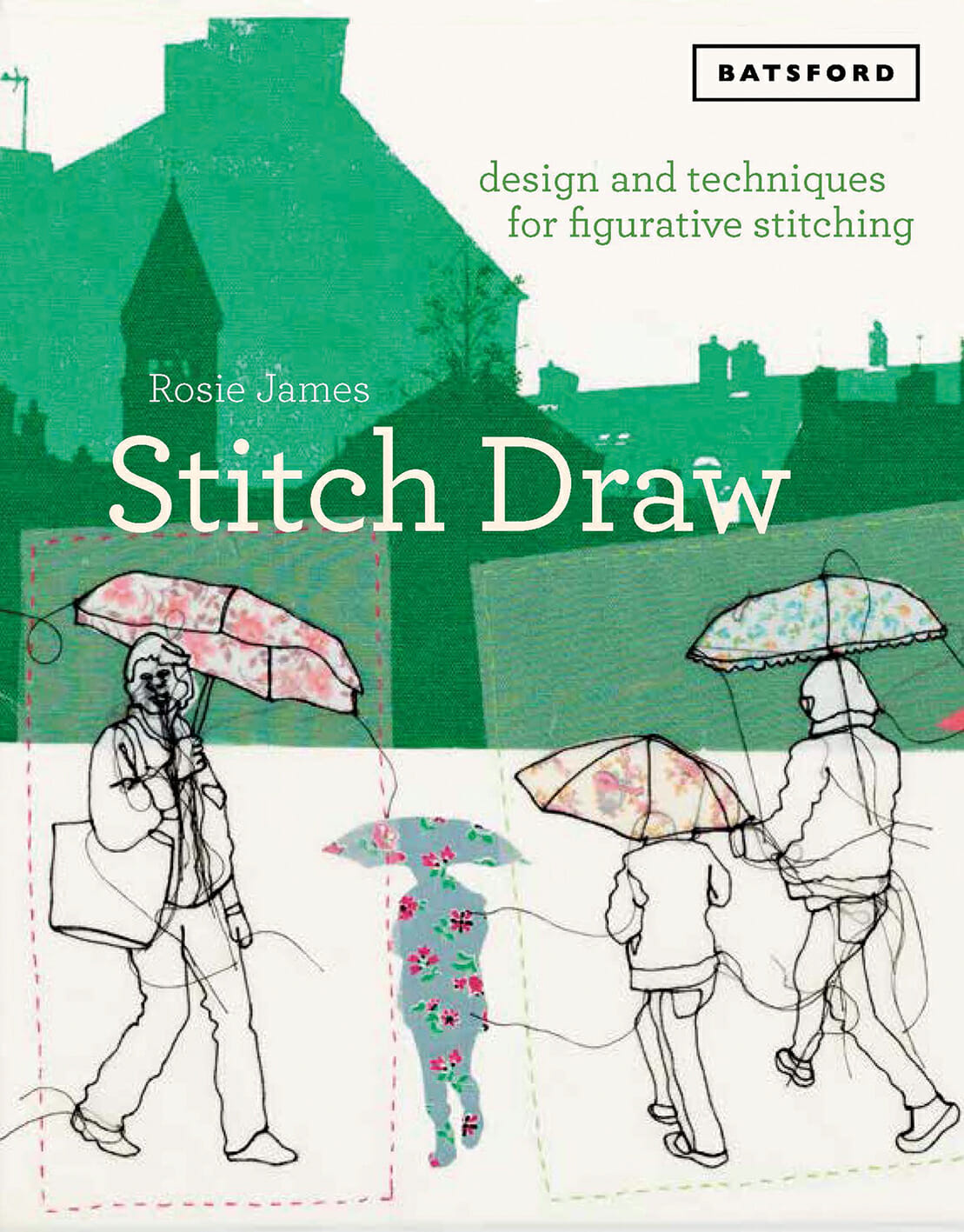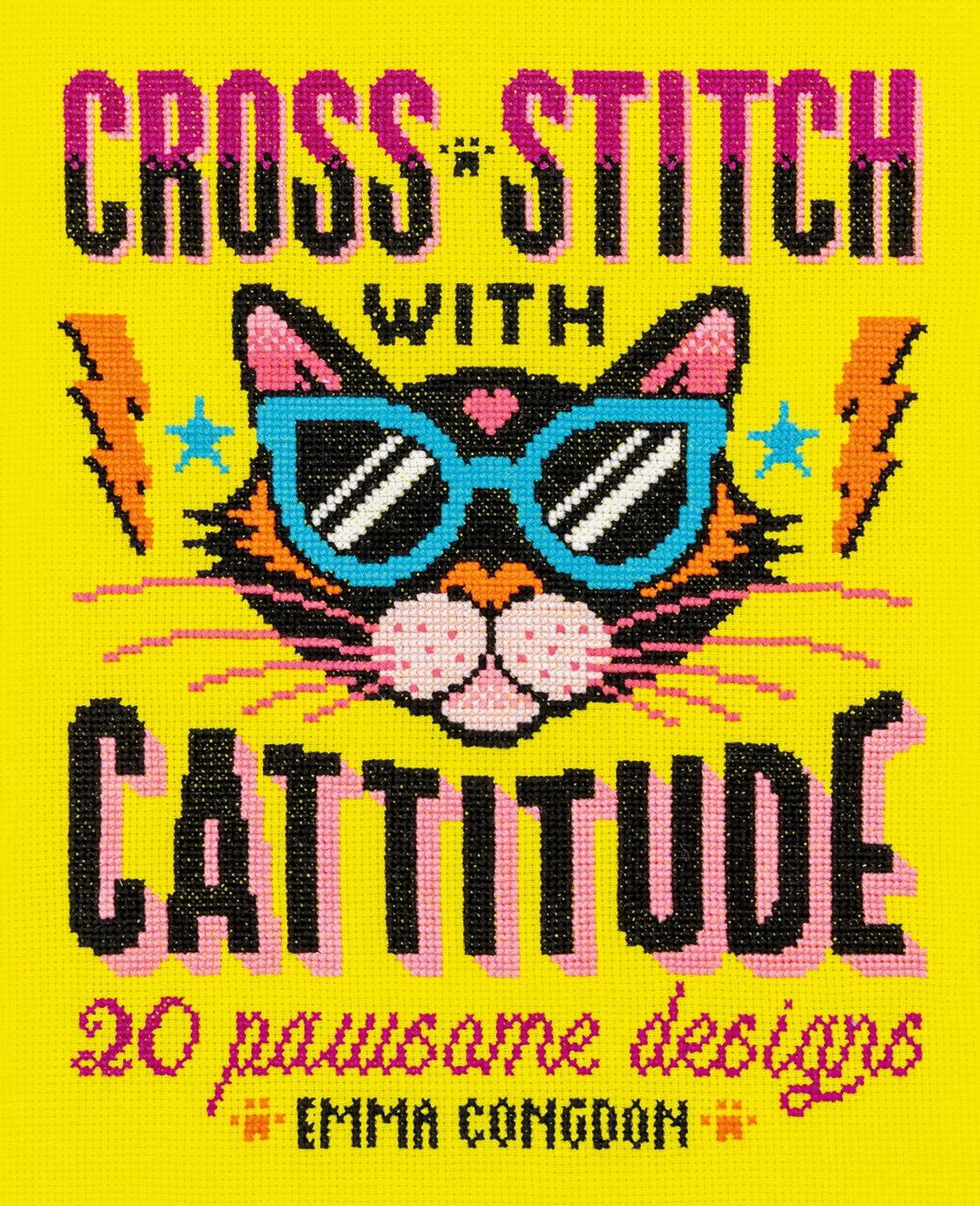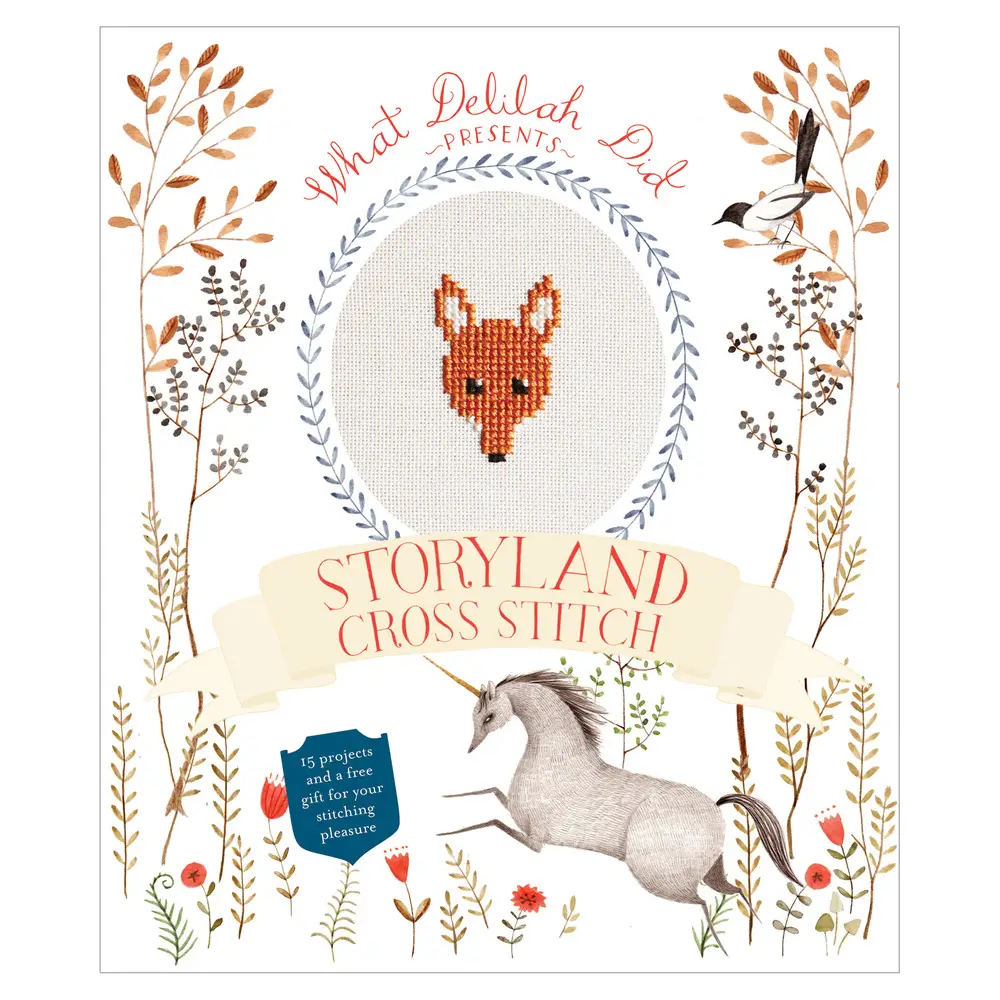
At Mr X Stitch we love to review textile art and embroidery books for you. There are so many great books to discover, packed with needlework inspiration and textile techniques, so we dive into each book to find out what’s good, what’s bad and let you know why you should pick it up.
Introduction
Stitch Draw: design and technique for figurative stitching, written by Rosie James.
To draw with a needle is a skill which seems to have become a fashion in recent years. With Sewing Machines now geared up to this method, it is only natural to find authors delving into this subject. Yet is Rosie James the woman to teach you?
Published by Batsford, this soft cover book has an enticing front illustration, yet is this enough to ‘draw’ you?
Let’s review inside….
Content
The book is divided into seven sections, with the first being an introduction.
This first section briefly explains what the subject matter is and how this book will work.
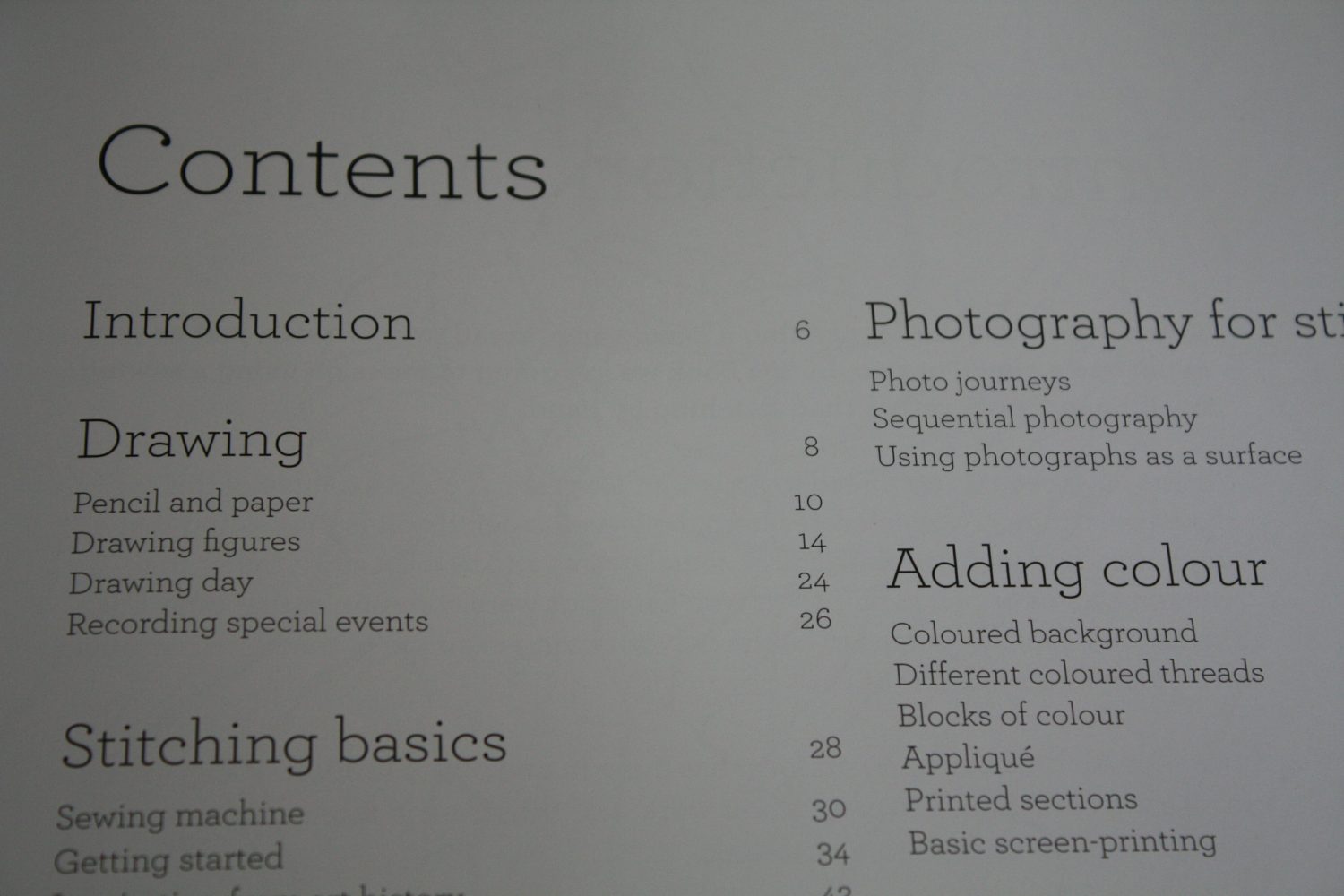
The book is then divided into skill based sections, including: Drawing, Stitching basics (thus great for beginners) and even how to use our Photography skills to inspire and add to stitch pieces.
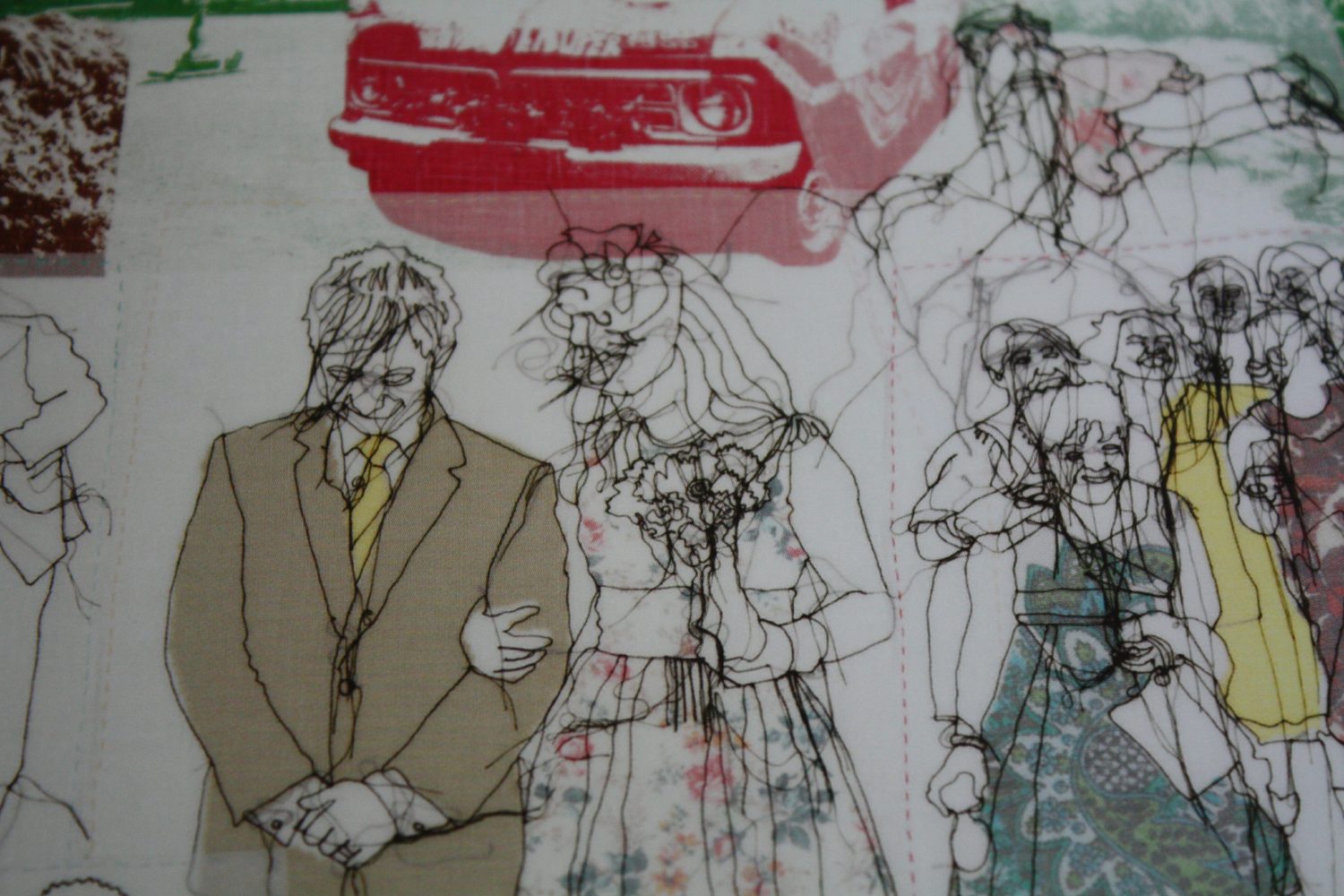
This publication is not solely an instruction manual, although there is advice and ‘how to’ sections, which lead us through each skill via wording and illustrations, set out in a developing format, so we see the project completed.
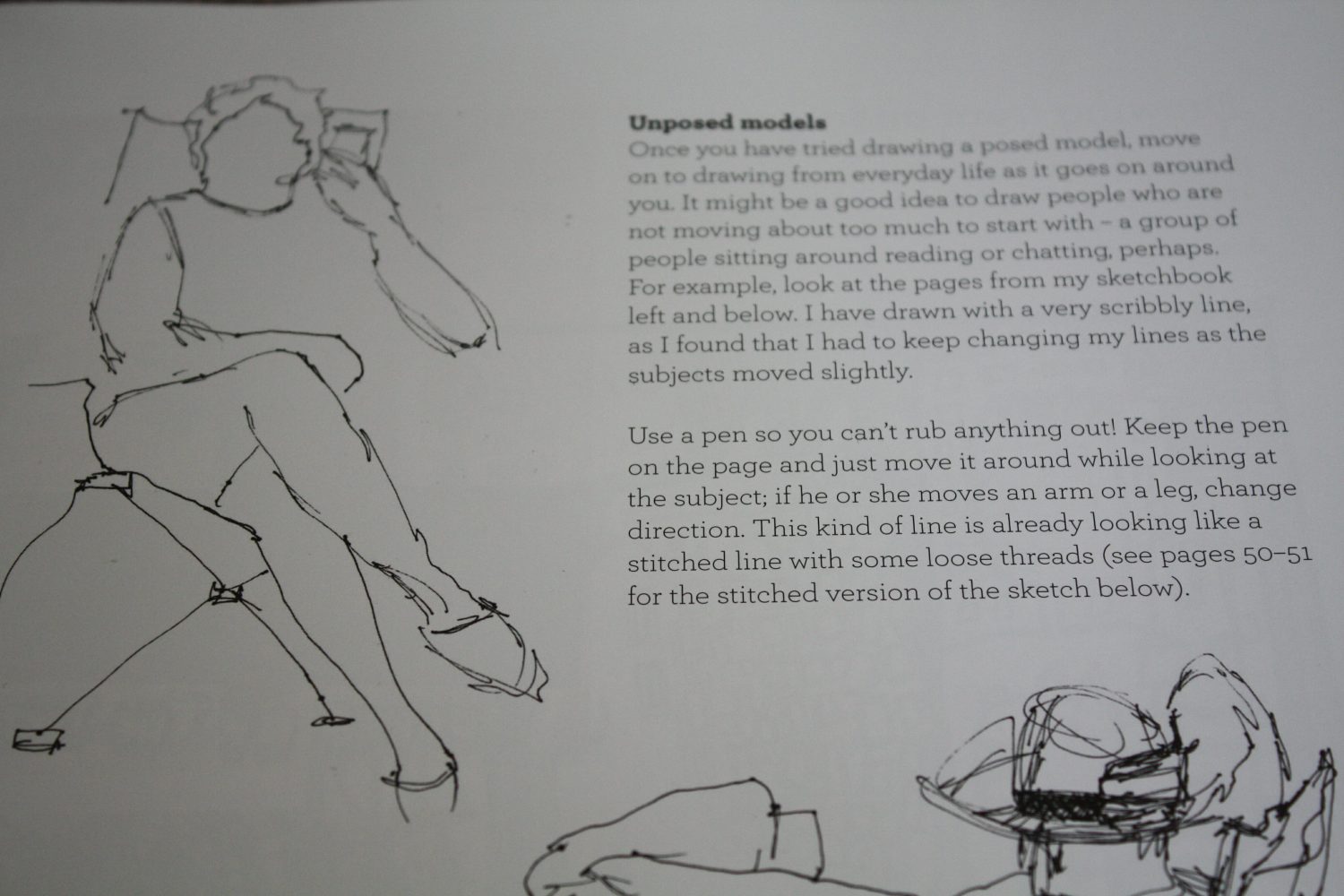
What Makes It Special?
We are not simply taught how to draw with our needle; unusual ideas are expressed, some of which are generated from James’ own artistic practice and personal specialism. On the piece below, James leaves her threads trailing. This is her style but could easily become our own.
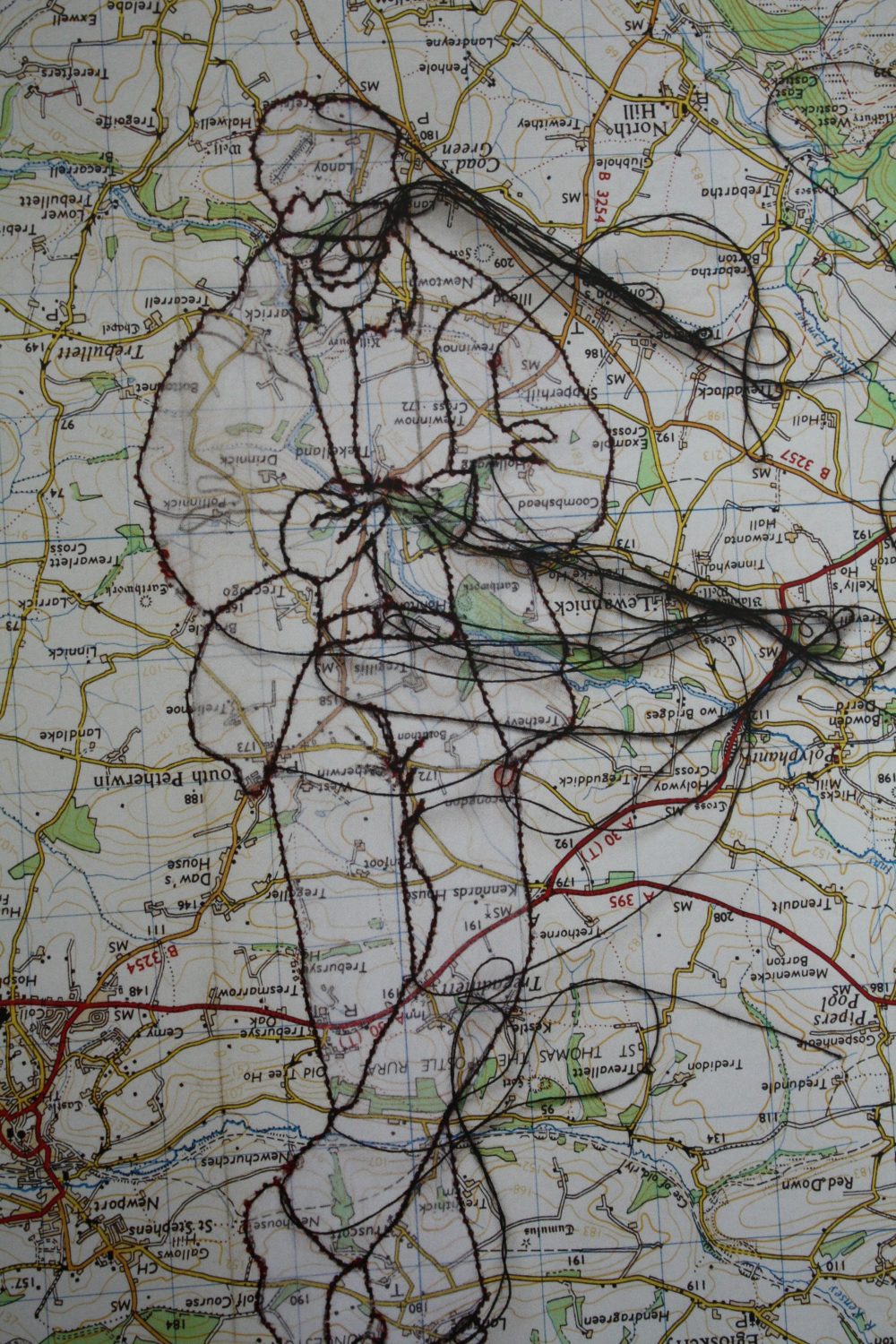
It is not just James’ work who we will see illustrated. A number of artists have been included, which gives the book a balanced feel.

Seeing a variety of artists use drawing, further inspires us to figure out a way which interests us personally.
Photography
As with all Batsford published books, imagery is the selling point. Thus as always, nothing is left to chance and if an illustration to understand a point is needed, it will be there. Having said that, its not been chosen without thought or ambiance; there is a real artistic flair seen throughout the book, merging Fine Art and Textile based skills.
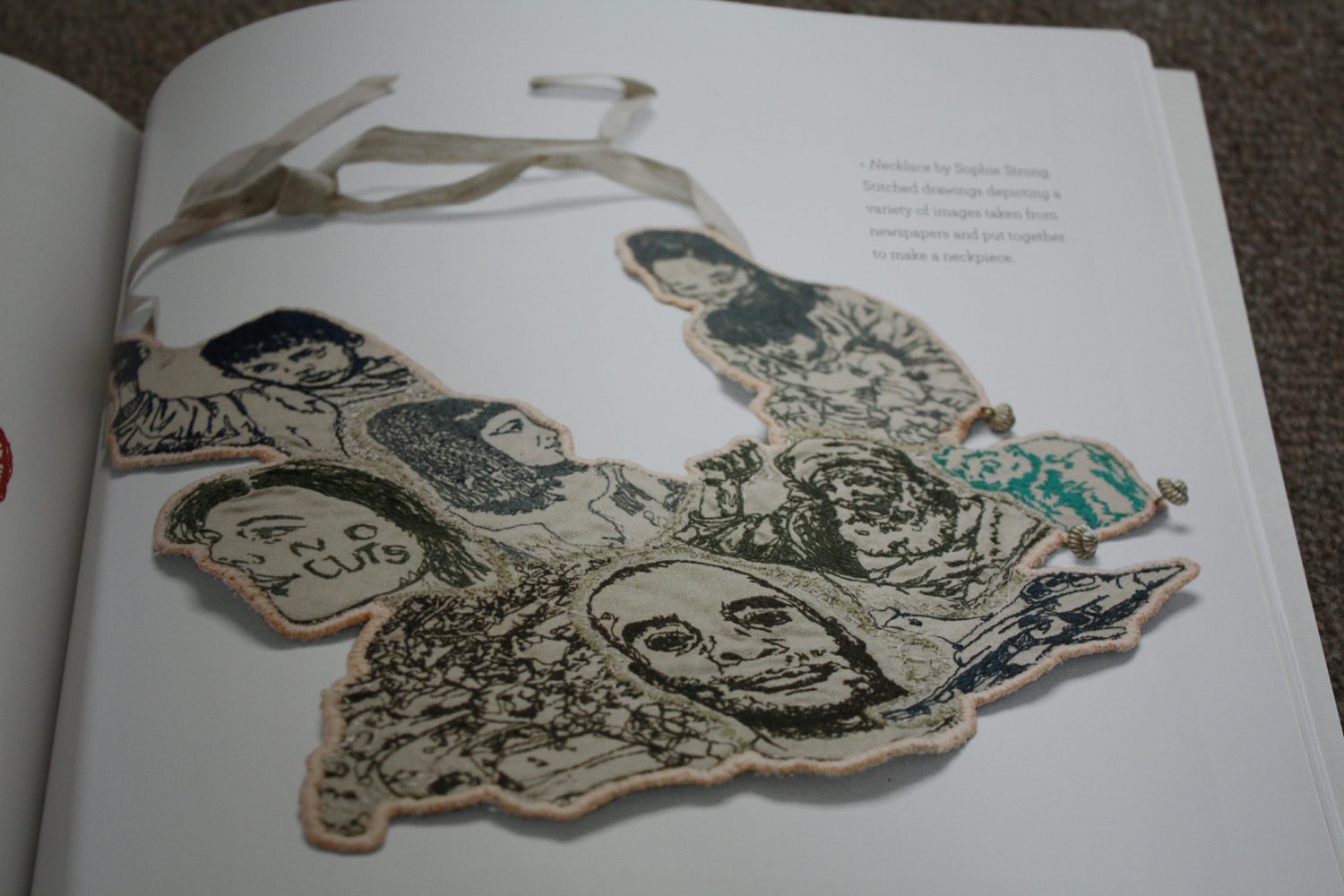
Photographs are even used in a different way, merged with stitch!
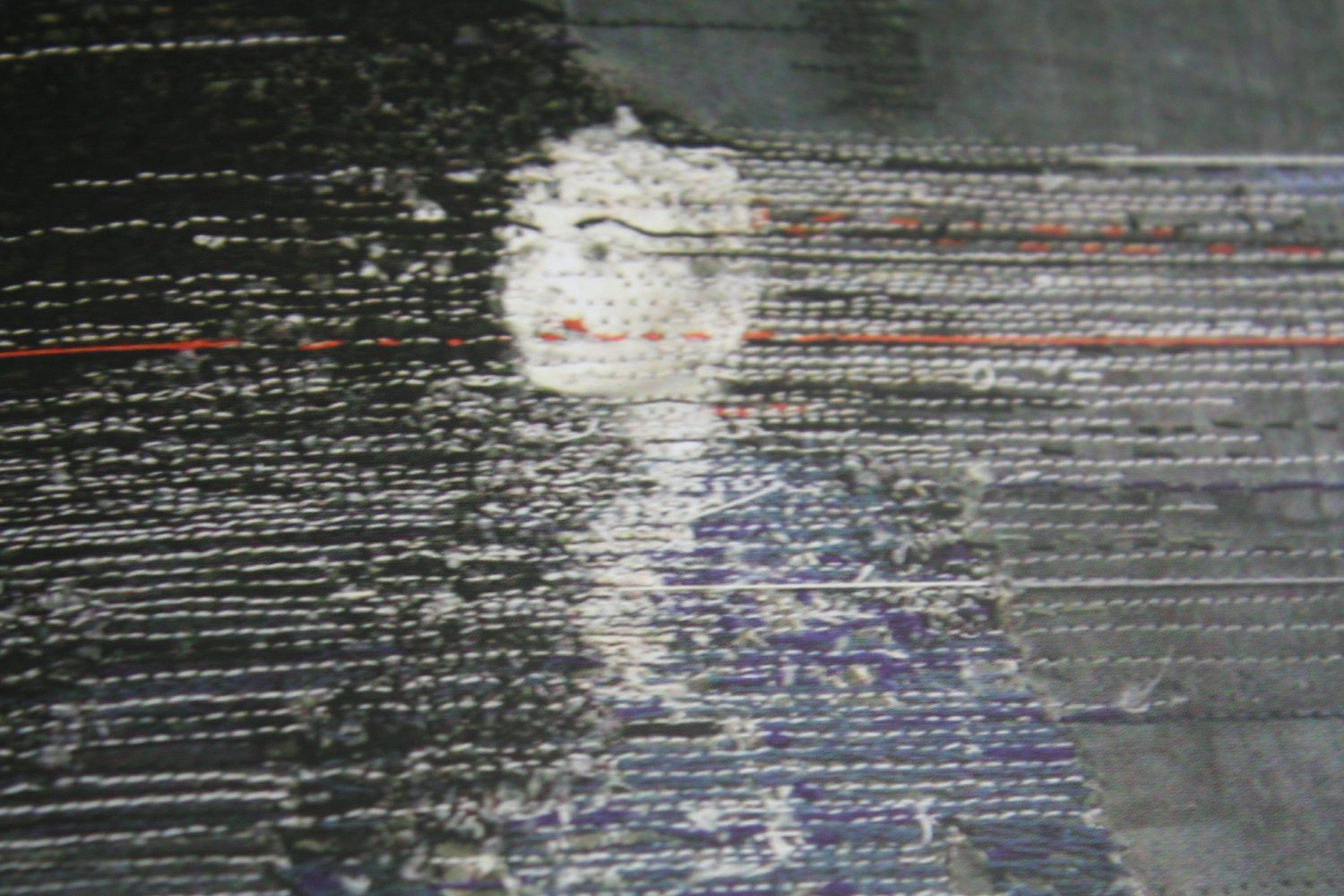
What Is Wrong With The Book?
If you don’t like to draw, the book will have less appeal, although the skills it is possible to learn throughout the book, could be transposed to other areas of Textile art.
If you don’t have a sewing machine, the book still acts as an encouraging tool to invigorate the Hand Embroiderer.
Conclusion
As James’ tells us in her introduction, ‘you do not need to be an expert on a sewing machine in order to make drawings with it’. From pencil lines to merging fabrics with stitch illustrations, this book is a pool of ideas, with interesting imagery throughout.
It proves to be an inspiring companion, for the experienced embroiderer who wants to learn a new still, to the new student, who wants to take a fresh look at Textiles.

